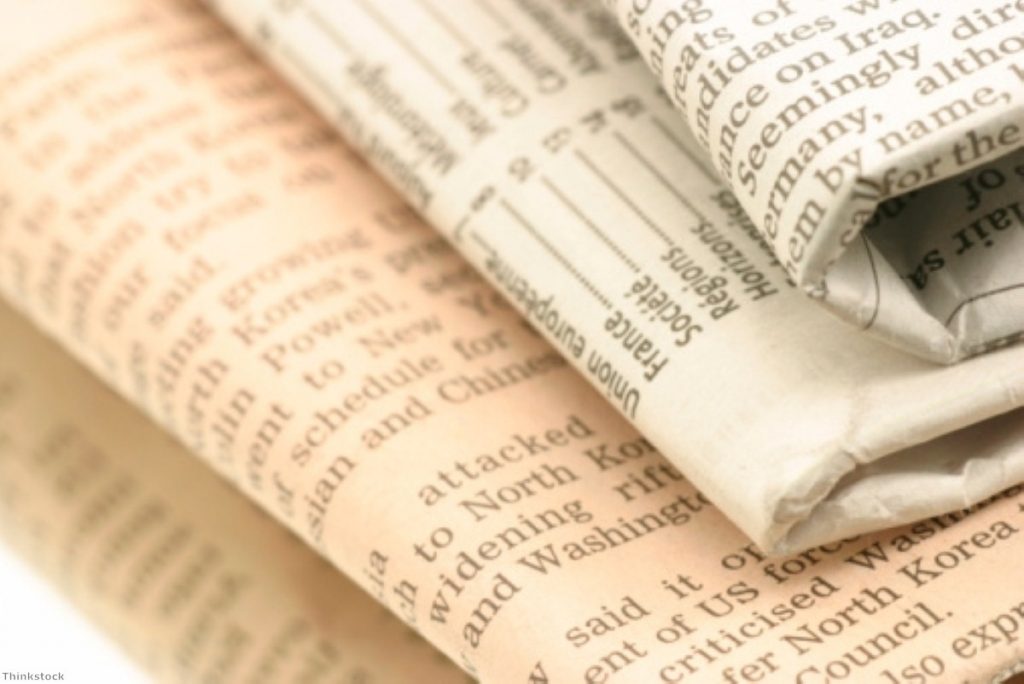Independent-Standard merger: The political and media landscape shrinks
The Independent and the Evening Standard are partially merging, in a move which has big implications for journalism and politics.
The Independent will go seven-day, with the Independent on Sunday editor leaving and staff migrating over to the daily. The Standard and Independent editorial staff and operations will mostly move to the same floor and share resources. Some departments will be fully integrated but the brands will remain separate. A TV studio will be built by the news desk.
Some thoughts:
1) The semi-merger will deepen quickly. The independent is dying, with a 35% year-on-year fall in circulation, even though it's much cheaper, smaller sister title – the i – is picking up some of the slack. The Standard is turning a profit of £1 million after going free three years ago. One brand is succeeding, one isn't. It will be hard for the Indie to resist it's larger and more successful partner. Even if this wasn't true, once you start pooling functions and resources it becomes the natural direction of movement.


2) There is the start of a dangerous process for investigative reporting. The Independent on Sunday journalists are being brought into the daily routine. Many will lose the extraordinary luxury of having several days to provide somewhere between one to three stories – the same most journalists do in a day. This is the start of a process which will take place in all newspapers as the Sunday doorstop ceases to be commercially viable as a separate entity to the daily outlet.
3) The inclusion of the TV studio (the Standard just won the London TV licence) shows how media outlets will start consolidating across print, TV and digital. This needs to come with an improvement in their web operation. The Independent and, to a lesser extent, the Standard, have an appalling online presence – badly designed, badly thought out and badly attended.
4) Politically, the media landscape will shrink. Management was keen to stress that the Independent and Standard will remain separate brands. That probably will not last long – barring a massive improvement in the Independent's performance – and even if it does, it might not mean much if staff and resources continue to merge. The Standard is a very different beast to the Independent. It is socially liberal but economically right-wing. If the Independent is subsumed, the Mirror and Guardian will be the only remaining left-liberal daily newspapers.
5) Eclectic, non-partisan editorial policy is in danger. The Independent's main selling point is in its title. On its best days, its comment section was the most vibrant on Fleet Street, with the cautious, authoritative commentary of Steve Richards rubbing shoulders with the enjoyable, alcohol-soaked right-wing lunacy of Bruce Anderson and the socialist comedy of Mark Steel. When it came out, upon the death of the print unions, it seemed the perfect attitude for a post-political age – that period when everyone insisted left and right were redundant terms. Now, it looks like it'll be the first to sink. The market is too small. If you're on the left, it is not reliably left wing enough, so you read the Guardian. If you are not on the left, you consider it too left-wing for you and you have plenty of competitors to pick from. The internet and the print market both rewards media outlets which cement reader's prejudices. People want to read about the world through their chosen prism. Twitter, with its pack mentality, has cemented this process. The 'like' function on Facebook and the 'retweet' button on Twitter, though seemingly minor developments, are having a significant effect on political writing. The Standard/Independent merger is further proof of that direction of travel.












